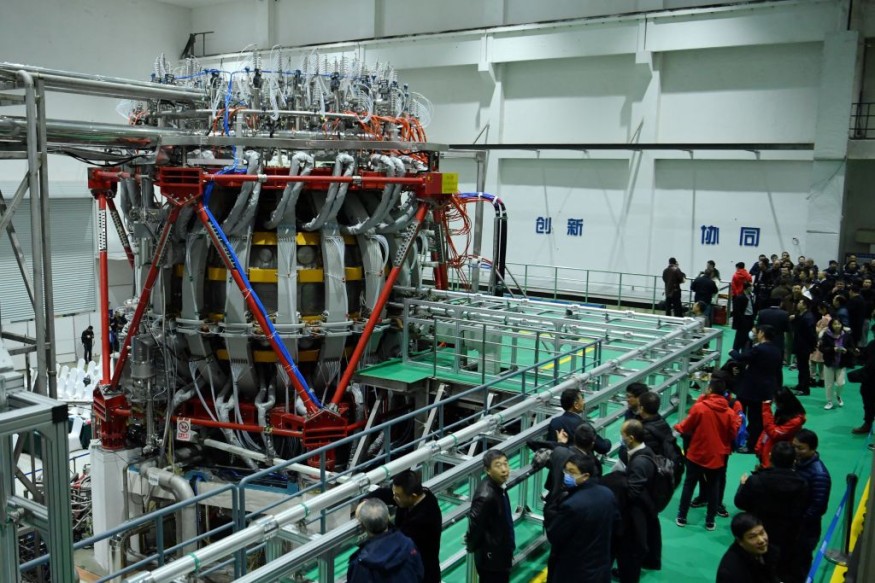China's Experimental Advanced Superconducting Tokamak (EAST) nuclear fusion reactor is an "artificial sun." They recently set a new world record of superheating a plasma loop to temperatures five times hotter than the Solar System's Sun for over 17 minutes straight.
The state media Xinhua News Agency reported that EAST was able to maintain a temperature of 158 million degrees Fahrenheit (70 million degrees Celsius) for a total of 1,056 seconds. It is a significant achievement for scientists to create a near-unlimited clean energy source.

China's HL-2M nuclear fusion device, known as the new generation of "artificial sun," is displayed at a research laboratory in Chengdu, in eastern China's Sichuan province, on December 4, 2020.
Another Milestone for China's $1 Trillion Artificial Sun
Scientists have been trying to mimic the nuclear fusion process in the sun and other stars for more than seven decades to create a nearly unlimited energy source. According to Live Science, the fusion between hydrogen and helium atoms under high pressure and temperature makes the stars burn and convert them into light and heat, generating large amounts of energy.
But China has found a way to copy the nuclear fusion in the sun and stars by creating a nuclear fusion reactor called EAST. Their recent test smashed a previous record set by the Tore Supra tokamak of France in 2003, where a loop of plasma remained at similar temperatures within 390 seconds.
Before the recent experiment, EAST set a record in May 2021 for its unprecedented temperatures of 216 million degrees Fahrenheit ( 120 million degrees Celsius) within 101 seconds. In contrast, the sun is only 27 million degrees Fahrenheit (15 million degrees Celsius).
ALSO READ: Nuclear Fusion Test in Lab Hailed as Holy Grail in Quest for Clean Energy
What Does EAST Aim to Do?
Researcher and experimental leader Gong Xianzu from the Institute of Plasma Physics of the Chinese Academy of Sciences said that the recent operation lays a scientific and experimental foundation towards a nuclear fusion reactor that may provide a nearly unlimited energy source.
According to ABP Live, they can do this using deuterium to provide a steady stream of energy because it is an isotope of hydrogen commonly known as heavy hydrogen with one proton and one neutron. Deuterium is used in nuclear fusion reactors to slow down neutrons and has lower chances of absorbing them than hydrogen atoms, therefore acting as a moderator.
The artificial sun is made possible due to the raw materials abundant on Earth, unlike when energy is created using fossil fuels, such as oil, coal, and natural gas that harms the environment and may someday deplete.
On the other hand, nuclear fusion is the merging of two or more nuclei to produce a single nucleus heavier than any other nucleus that contains large amounts of energy to meet the demands of a growing world.
The EAST nuclear fusion reactor is expected to cost China $1 trillion by the time the experiment is finished in June before it will be tested on technologies for a bigger fusion project called the International Thermonuclear Experimental Reactor (ITER), which is being built in Marseille, France under the collaboration of 35 countries, including all states in the European Union, the UK, the US, and China.
Live Science previously reported that ITER contains the largest and most powerful magnet globally that can produce a magnetic field 280,000 times stronger than the one surrounding Earth.
Check out more news and information on Nuclear Fusion in Science Times.
© 2025 ScienceTimes.com All rights reserved. Do not reproduce without permission. The window to the world of Science Times.












